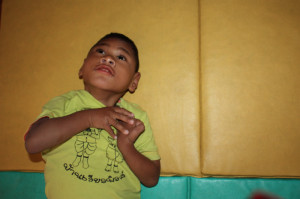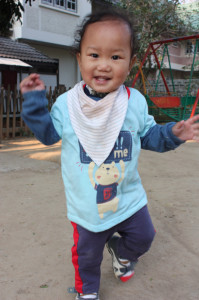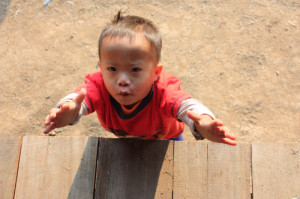CMF International News |
|
Posted: 08 Mar 2016 07:30 AM PST
Thailand missionary gives disabled children a voice
CMF missionary Becca Schafer works with Hope House, a small, home-style facility for disabled children, in Chiang Mai, Thailand. Phil, a young boy from their home, was unexpectedly transferred to the primary government institution for disabled boys at age 10, and staff from Hope Home visit him frequently. “Our primary purpose in visiting is to encourage Phil, who has been struggling since being placed there a year and a half ago, but we also try to encourage the caregivers there,” said Becca.
Here’s the story of a recent visit to Phil at the institution:
White walls, white floors, and steel beds crammed together; the silence of the room was deafening. There was Phil, lying among the rest. That silence was broken ever so quickly by a shriek of recognition. This nurse’s room was transformed for a moment. For the span of a few hours it was a meeting place where he could be in our arms laughing, talking, and kicking around. Sacred moments of fruit juice, Teletubbies, selfies, and the clicks of counting were such a contrast to their surroundings.
A larger boy runs across the room, carrying a picture of himself. Pointing to the picture and then pointing to himself and his bed, his face says it all: “Look, it’s me, I am here.” Across the room children lay silent for the entirety of our visit, awake but not engaged. A child sits next to us, shrieking occasionally, hoping someone will take notice of his presence, “Look, it’s me, I am here.” The daily life of this institution is eerily quiet. The darkness hangs over everyone, with discouraged staff and depressed children. It seems that even the walls scream the words of that young man: “Look it’s me, I am here.” For a moment we broke through the silence of this place and they were seen. Phil was held. The caregivers were seen. The nurse, so weary, was heard.
Time ran short and we had to leave, passing by many more rooms all the same, but most of which house more children than this one. The occasional sound from beyond the concrete seems to scream: “Look, it’s me, I am here.” Yet in the rearview mirror of the taxi, through the bustle of traffic, past slums, schools, office complexes, markets, and more, in an instant the institution becomes invisible. The children inside seem so very unreal. Yet they are so very real. They exist within our world, they are our children. For me, Phil has made that ever so clear, yet I stop to think about not only him, but of every face.
I know a different place. I hear the sounds of laughter. I understand defiance at naptime. A clap for a job well done, and a smile upon realizing one’s own success. I have seen light breaking through, eyes filled with purpose, and lives filled with joy. Meaningful lives overflowing with Christ. I imagine more than an institution. Yet how do we make imagination a reality?
Every day we care for our seven children at Hope Home, loving them unconditionally, cheering their successes, and encouraging their mistakes. We advocate for them, seeking their future, praying for their every moment. We say for them: “Look at you! You are here! You are loved! You are ours!” They come from backgrounds of neglect, abandonment, abuse, and so much more, but they have come to be seen. They never question it; they are seen. Not by mere human eyes but by the eyes of their Heavenly Father. They are known in their home. They are known in their community.
We strive to have them known in their families, whether through returning to their birth families or through adoption. And they know it. They know they are known. They know they are seen. They know that they are never, ever alone. Yet, I am reminded that we do this because at one point each of our kids had that same look, that same message: “Look at me! I am here!” I praise God for the ways He worked to form and develop Hope Home through Judy and many others. I am brought to my knees in gratefulness as the Lord has brought me here and keeps me here to join in this family.
Yet this other institution still exists just beyond our city, and I imagine more for each of these precious children. I imagine more than institutionalization of children with disabilities. Children in families, children who are loved, accepted, and valued. Families empowered. Communities motivated and mobilized. I imagine a chorus of voices coming from the homes, schools, and communities of children with special needs “Look at you! You are here! You are loved! You are ours!
|



